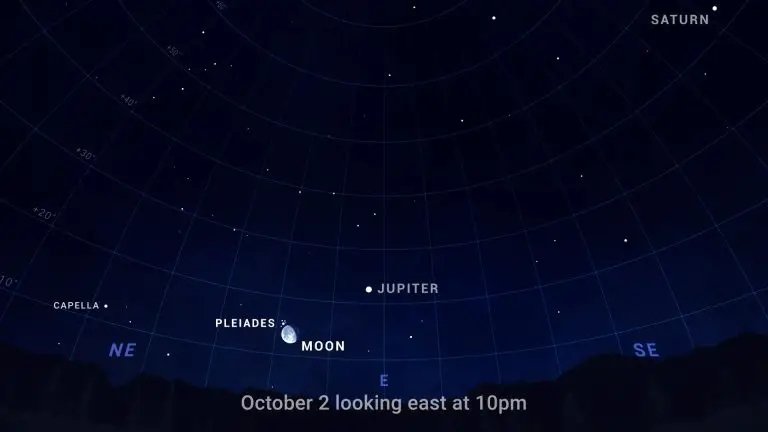
**October** 2023 offers a celestial treat with a notable “ring of fire” solar eclipse, captivating alignments of planets, and NASA’s launch of the Psyche mission to investigate a unique asteroid.
What are some skywatching highlights in October 2023?
A “ring of fire” solar eclipse across the Americas on October 14 is this month’s top highlight! Plus the Moon, Jupiter, Saturn, and Venus strike some lovely poses for stargazers and planet watchers to enjoy.
What to Look For:
A partial solar eclipse! Viewers within a narrow swath across the Americas will delight at a “ring of fire” eclipse of the Sun on October 14, while the Moon and planets strike some dazzling poses in the October sky.
October skywatching highlights:
October 2 – The Moon rises a couple of hours after sunset, appearing super close to the Pleiades star cluster. Look for them low in the east after around 10 p.m., then they travel across the sky together all night.
October 3 – In the predawn sky, the Moon appears a couple of finger widths apart from the Pleiades. Look for them high in the southwest, flanked by Jupiter and the bright, red giant star Aldebaran in Taurus
October 10 – On October 10th, look for Venus in the east before sunrise, accompanied by a slim crescent Moon. In between them, spot the bright heart of Leo the lion, bluish-white star Regulus.
October 14 – Annular eclipse of the Sun – Along a path about 125 miles wide, the Sun will appear as a narrow ring of light, often called a “ring of fire.”
The path of this partial eclipse sweeps across the Americas, beginning in Southern Canada and crossing the Western U.S., before moving across Central and South America.
Outside the annular eclipse path, those within the viewing zone will still see a partial eclipse.
The maximum amount of the Sun that will be covered by the Moon depends on your location.
October 14 – New moon
October 23 – Look toward the south an hour or two after sunset to find the Moon, about 70% illuminated, hanging just beneath the planet Saturn. Their close proximity in the sky will make for some easy telescope viewing of these two skywatching favorites.
October 24 – Find the Moon hanging just to the east of the planet Saturn tonight.
October 28 – Full moon – The full moon rises together with planet Jupiter tonight. These are two of the brightest objects in the sky, and seeing them so close should make for quite an impressive sight.

For more information please visit https://scitechdaily.com/dont-miss-ring-of-fire-solar-eclipse-moon-jupiter-saturn-and-venus/